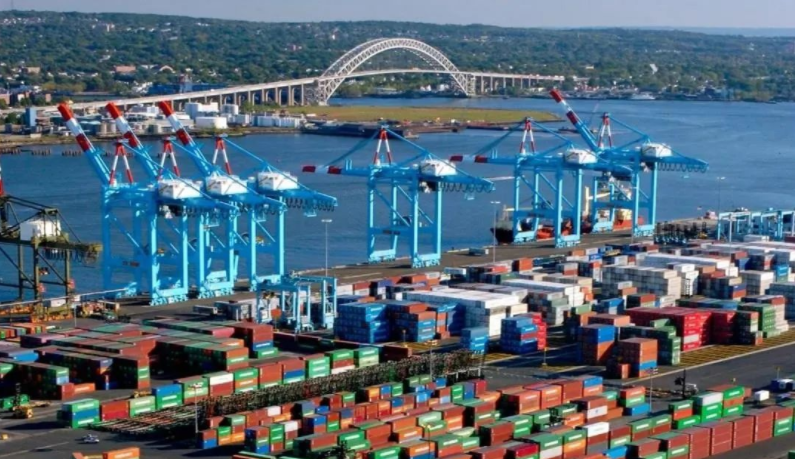
The decline of the container shipping market was unstoppable. The Shanghai Export Containerized Freight Index (SCFI) fell for 11 consecutive weeks, and the decline expanded to 8%, the largest weekly decline since the epidemic.
According to the latest data released by Shanghai Stock Exchange on August 26, the SCFI index continued to drop by 275.57 points to 3154.26 points last week, falling to a new low since early May last year. As high as 11%, the near-ocean line also fell by as much as 21%.
Among the three major routes, the freight rate per FEU on the US West Line dropped by USD 191 to USD 8,801 per week, or 2.12%. Although it hit a new low since mid-June last year, the decline was lower than that of other long-haul routes. The freight rate per FEU on the US West Line fell by US$648 to US$5,134 per week, to a new low since mid-July last year. The decline expanded from 6% in the previous week to 11.2% in one go, showing a double-digit weekly decline for the first time.
At the same time, the European line was also difficult to stop falling, and the weekly freight rate per TEU fell by US$347 to US$4,441, a drop of 7.25%, hitting a new low since late April last year.
Industry insiders pointed out that judging from the current freight rates, the container shipping market has determined that the peak season in the third quarter will not be prosperous. Due to inflation in the European and American markets, sluggish demand, and backlog of inventory, with the reduction of supply, the pressure of container shipping companies to fill the tank has led to a phenomenon of bargaining and rushing for goods. .
With the failure of the traditional peak season market in the third quarter, the market began to decline the speed and bottom of the freight rate. The container shipping company continued to adjust the supply of space to support the freight rate. At present, the European and American lines still enjoy excess profits; but if the decline continues to expand, every important checkpoint will be dropped. It may affect the market ecology; and in the context of the rapid fall in freight rates, it is not ruled out that the cargo owner may renegotiate the long-term price with the container shipping company.
According to statistics, the SCFI index has fallen by more than 38% since its historical high. Among them, the freight rate of the European line has dropped by up to 43%, the west line of the United States has dropped by more than 36%, and the east line of the United States has dropped by 26%. Severely related. In addition, the freight rates of the near-ocean routes in Southeast Asia have fallen sharply recently, mainly because the Vietnam and Thailand routes with large cargo volumes have attracted many container shipping companies to rush for goods.
The industry has previously estimated that as long as the freight rate does not fall by more than 50% from the high level, the container shipping company can still maintain considerable profits, but if the current SCFI index trend is followed, the profitability of the container shipping company may face a test.
Last week, the spot freight rate per FEU on the US West Line has fallen below the US$5,000 mark. Many small boats chartered at high prices have greatly reduced their profits. Large ships also have pressure to fill their tanks and need to cut prices to grab goods. If the price falls below $3,500-4,000, small boats that do not have a cost advantage may exit the market first.
Analysts pointed out that the first factor that can prevent the decline of freight rates is port congestion, which reduces the turnover rate of ships and naturally reduces the supply of space. There are land strikes and port strikes in Europe and the United States, including the Port of Fristol in the United Kingdom and the Port of Hamburg in Germany, etc. In September, it was reported that nearly half of the flights on the European line were to be cancelled, and the industry observed that the decline in freight rates on the European line seemed to show signs of slowing down.
The future trend of freight rates depends on inventory digestion and the speed of inflation mitigation. The industry predicts that after two seasons of inventory digestion in Europe and the United States, it is expected that seasonal demand and general commodity replenishment will be seen in the fourth quarter. It is expected that the off-season will continue to support freight rates.
Previous:Freight down! Demand is softening! The liner company begins operations...
Next:Matson announced the cancellation of the CCX route, and the last flight will leave Shanghai on Septe